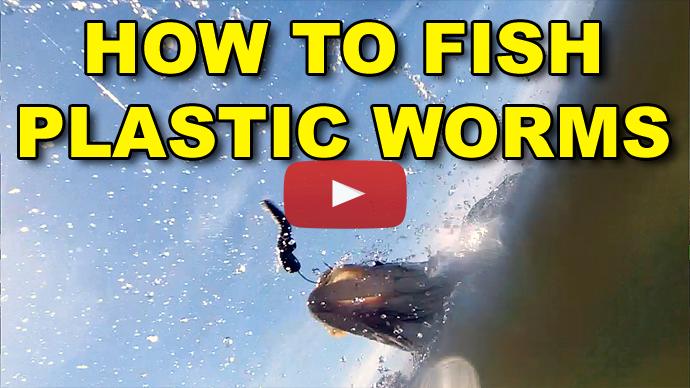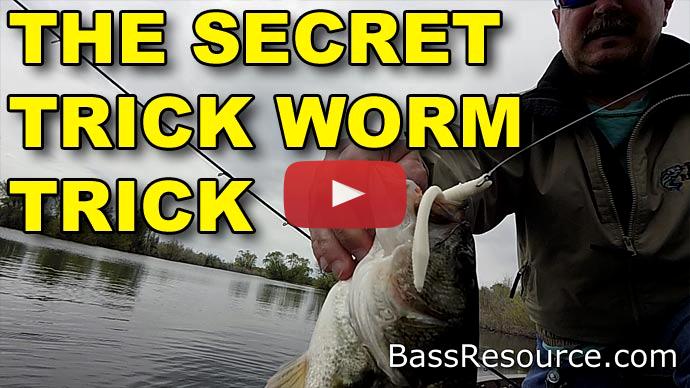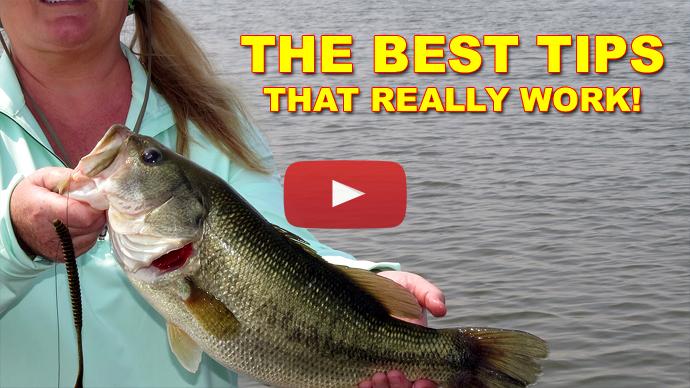Hey, guys, I'm Michael O'Neal. I want to talk to you about springtime worm fishing. And there's really one style of worm that really created everything, and it's kind of fallen off the radar a little bit, but it still gets tons of bites. And that's just a simple, you know, like a 7-inch ribbon tail worm like this, and it's just a very tried and true way of catching fish.
And in the springtime, I think the plastics get overlooked a lot in the pre-spawn and you've got so many things changing. You've got warming trends, you've got cold fronts, you've got them transitioning into areas to spawn and that's why I really like this ribbon tail worm just rigged on a Carolina rig. And I don't like a really long leader. You know, like 24 to 30 inches, that's plenty long enough. Some people get a little carried away with that but I like a half to a three-quarter ounce weight for most of the time.
And you look for the places that the fish are gonna be moving into the spawning bays. And they're not gonna be way out deep, most places. Most of the time, what you're looking for is that 6 to 12-foot range in the pre-spawn. A lot of people get to fishin' too deep when it's cold like that but when they're lookin' to move off from their wintering places, that 6 to 12-foot range is really ideal and the Carolina rig's a great way to catch them.
It doesn't matter what the conditions are, if it's a warming trend, a cold front, or anything in between, a Carolina rig will still get bit, where a lot of hard baits seem to, kind of, be temperamental, too temperamental to the fish.
And with this, I like a longer rod with a Carolina rig. When you're throwing something with that leader, a longer rod is gonna help you make good casts. And when you do make a good, long cast, and you get a bite, you need to be able to have the long rod to get a hook set. So somewhere in that 7-foot-4-inch to 7-foot-6-inch range is what I like, that medium-heavy worm and jig rod. It's really nothing too fancy as far as that goes, just something longer, medium-heavy. You don't want it real stiff, but you don't want it too light either.
a good, all-around line size for that, I like Sunline 16-pound line and fluorocarbon. With the fluorocarbon, you can feel the bites better. You're gonna maintain contact with the bottom. You're gonna know if you're fishing it too fast. You're gonna know what the bottom composition is, and it's just gonna be a great way to get bites with a Carolina rig in the pre-spawn.
And then when those fish start transitioning up into the bays, into the pockets, into the backs of the creeks, to start spawning, you can also still stick with the ribbon tail worm. But that's when I go with it weightless, totally weightless on a spinning rod.
This is just rigged on a 3/0 Gamakatsu round bend offset worm hook. This is the 7-inch Baby B2 by Big Bite. And this is actually one of my favorite colors, this tilapia. It's a green pumpkin base with blue and purple flake in it. Nothing real fancy, but a lot of guys like green-pumpkin-purple, a lot like green-pumpkin-blue. This just, kind of, adds the best of both worlds.
And when they're spawning, you want something, most of the time, almost all the time with a really light weight. And you want it to fall very slowly. You want it to be very subtle. You don't want something that makes a whole lot of commotion. And you don't want something that makes a lot of splash when it hits the water.
So when you're fishing this weightless, it's gonna stay in the strike zone longer and you're not gonna spook those fish when it hits the bottom. It's way too light to throw on a casting rod so you're gonna be using lighter tackle. This is a Denali N3 7-foot medium rod. That's what I like. I don't like a real long spinning rod because when you're doing this, a lot of times, you're up around the bank. You're not offshore. You're having to move around tree limbs, around docks, just around different things. And the shorter the rod, to a certain extent, the more accurate you're gonna be. So 7-foot is what I like. Some guys like on down to 6-foot-10-inch or so, somewhere in that range.
I use Sunline 10-pound SX1 braid and I'll go with a 10-pound Sunline Sniper fluorocarbon leader. And the leader length is a lot of just personal preference. Mine's probably averaging about 20 feet. I like for it to be inside my reel when I get a fish close to the boat. When you get... That's where your most strength is, or your most weight resistance is gonna be on your knot is if you get a fish close to the boat and he makes a sudden surge. So I like for that to be up in my reel where I don't have a whole lot of resistance on that.
But again, when they're spawning, that slow fall is what you really wanna key on and it's just something that doesn't spook the fish. A lot of people have done this with a lizard for years and years, but a 7-inch curl tail worm, ribbon tail worm will do just the same.
And then when those fish start transitioning off of the beds, they're gonna start moving out towards deeper water again, and out towards their summertime places. So in the post-spawn, you're gonna look again for those same places that you looked for during the pre-spawn, the hard places, the channel turns, the secondary points, backend creeks, the first deepwater access that they're gonna have coming off the beds.
In the pre-spawn, you look for the last deepwater access before they go. And then post-spawn, you look for the first deepwater access where they're coming out. And you'll actually find places this time of year where you're gonna catch both pre-spawn and post-spawn fish in the exact same places, making the exact same cast.
And that's again, when I'm gonna go with this Carolina rig in the post-spawn. And it's really hard to beat a Carolina rig in the post-spawn because the fish, they kind of get in a little bit of a funk. They're not in a real feeding frenzy. They don't like moving baits a whole lot as soon as they come off the beds, they're, kinda, trying to recuperate.
So something just dragging it real slow, that you can maintain bottom contact, that's where you really wanna look for. And just those, again, those transition areas, a Carolina rig pre-spawn and post-spawn, and a weightless 7-inch ribbon tail worm during the spawn on a spinning rod. That's a little bit different, but springtime worm fishing can be really good and there's a lot of ways to catch 'em. But 7-inch, ribbon tail worm has been around for years and years as something that was in everybody's grandfather's tackle box, but a lot of guys don't have anymore. And anytime you can find one of those trends that the fish will still bite, give them something a little bit different that this age class of fish haven't seen, you're gonna get some more bites.
BassResource may receive a portion of revenues if you make a purchase using a link above.



